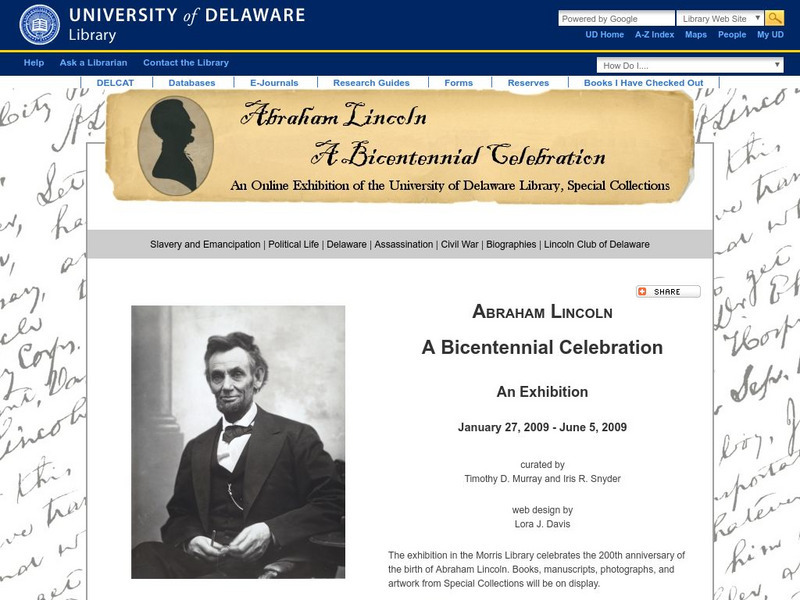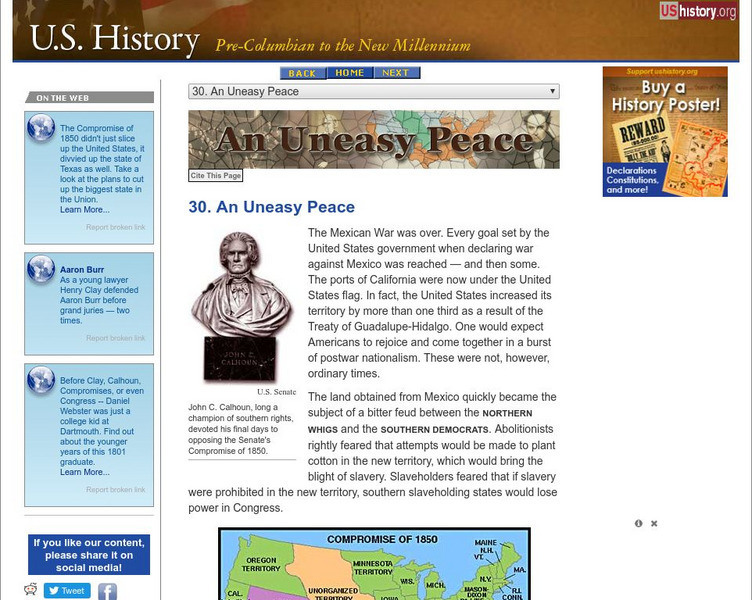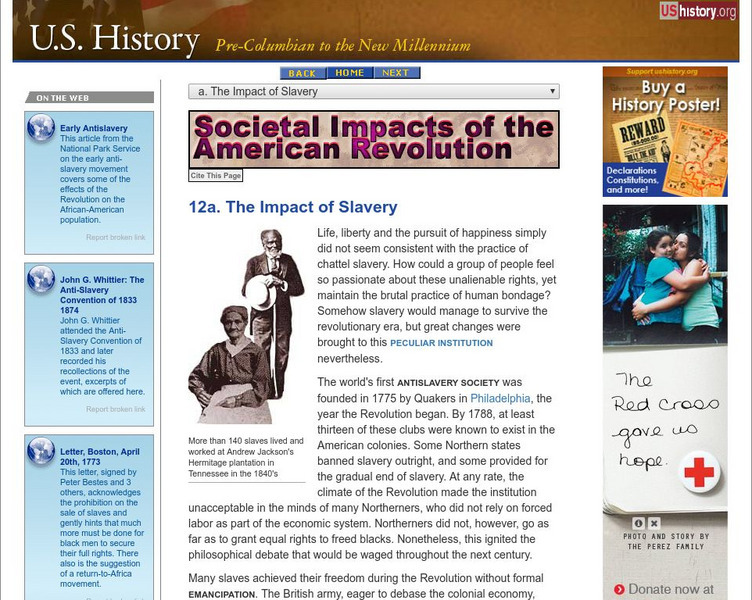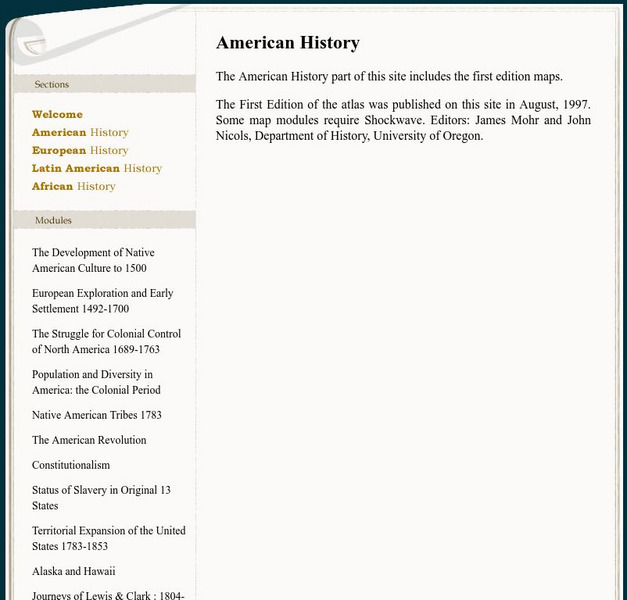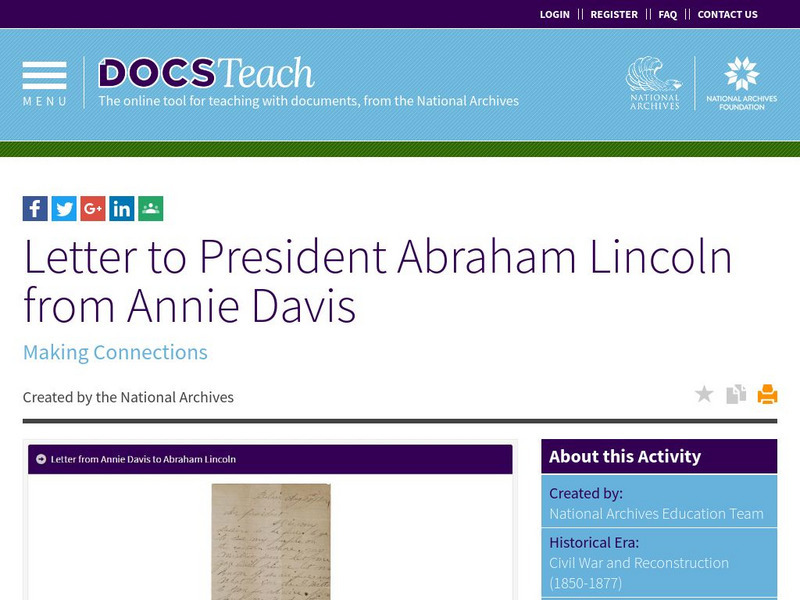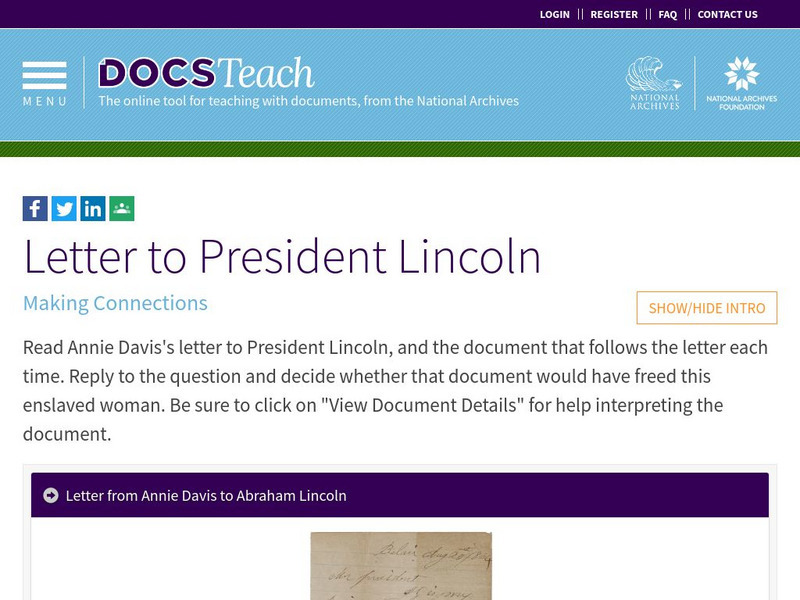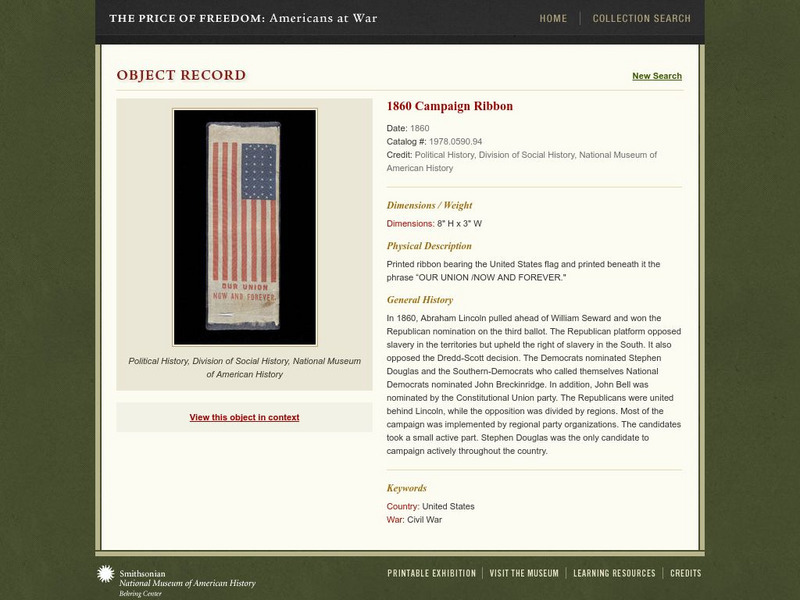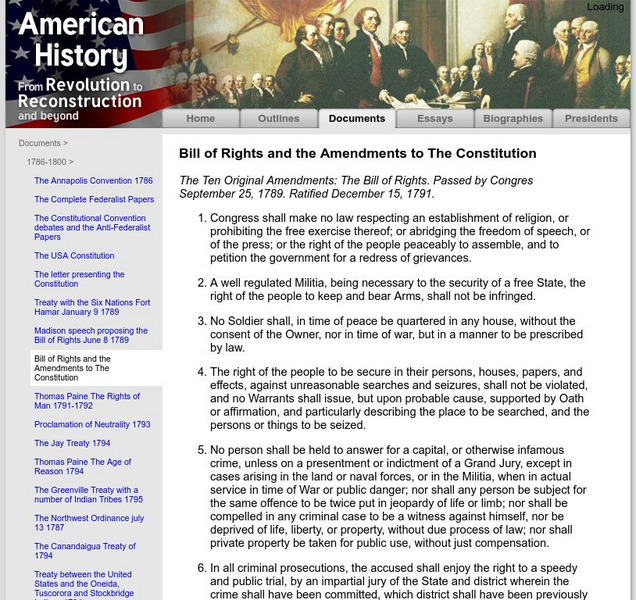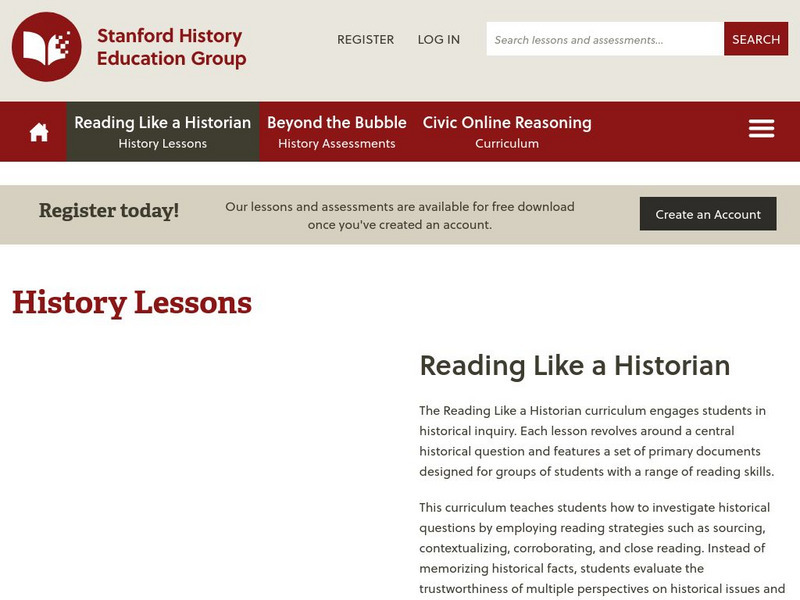Hi, what do you want to do?
Constitutional Rights Foundation
Constitutional Rights Foundation: The Slave Trade
Article and questions for discussion on the slave trade. Students read about how Europeans captured, transported, and sold African men, women and children into slavery.
Library of Congress
Loc: African American Odyssey: Reconstruction and Its Aftermath
From the Library of Congress, this resource documents the course of post-Civil War, post-slavery life for black Americans. Topics include education, constitutional amendments, voting rights and the many challenges African Americans faced...
PBS
Pbs Teachers: u.s. Constitution and the Idea of Compromise (Lesson Plan)
In this lesson, examine many of the opposing viewpoints held by founding fathers as they considered various compromises that made the U.S. Constitution possible, including the three-fifths compromise made to placate slave-owning states.
Huntington Library
Huntington Library: A Nation Conceived in Liberty [Pdf]
In this lesson, 11th graders examine the events and political philosophy that laid the foundations of the American government, the Constitution, and the Bill of Rights. They also look at what role religion played in shaping American...
iCivics
I Civics: Major Clash? Compromise!
In this instructional activity, learners explore the reasons for and outcomes of some of the most impactful resolutions made to form the U.S. Constitution.
Other
University of Delaware: Abraham Lincoln: A Bicentennial Celebration
Commemorating Abraham Lincoln's 200th birthday, this exhibition provides several documents and photographs remembering the President's life. Resources cover his political career, slavery, the civil war and his assassination.
Stanford University
Sheg: Document Based History: Reading Like a Historian: Reconstruction Sac
[Free Registration/Login Required] Young scholars use primary source documents to investigate central historical questions. In this structured academic controversy, students examine constitutional amendments, a Black Code, a personal...
Independence Hall Association
U.s. History: An Uneasy Peace
See what turmoil resulted from the acquisition of new territory after the Mexican-American War. There was great disagreement between those who wanted to abolish slavery and those who wanted to be able to carry slavery into the new lands....
Independence Hall Association
U.s. History: The Impact of Slavery
See how the ideals of freedom and equality garnered from the American Revolution were reflected in the early abolitionist movement and the banning of slavery in many Northern state constitutions as the new country was forming.
Stanford University
Stanford Encyclopedia of Philosophy: Aristotle's Theory
Excellent introduction from the Stanford Encyclopedia of Philosophy to Aristotle's political theory. Describes his theory of constitutions and citizenship and includes a bibliography at bottom.
University of Oregon
Mapping History: American History
Interactive and animated maps and timelines of historical events and time periods in American history from pre-European times until post-World War II.
US National Archives
National Archives: Letter to President Abraham Lincoln From Annie Davis
"Will you please let me know if I am free?" wrote Annie Davis. Annie Davis was a slave who wrote this letter to President Lincoln 20 months after the Emancipation Proclamation. To understand her confusion, examine the following documents...
PBS
Pbs Learning Media: The Reconstruction Amendments
For this interactive lesson, students will understand and explain the key provisions of the 13th, 14th and 15th Amendments to the U.S. Constitution, commonly referred to as the Reconstruction Amendments.
US National Archives
Docsteach: Letter to President Abraham Lincoln From Annie Davis
Students will study a letter from Annie Davis, a woman who was enslaved in Maryland and wrote a letter to President Abraham Lincoln during the Civil War to find out if 'we are free.' The students will decide if she received her freedom...
Digital History
Digital History: The Men of Philadelphia [Pdf]
Find short biographies of twenty-three of the fifty-five delegates to the Constitutional Convention and their ideas about government. These men were certainly not representative of the common man in the new United States, but they were...
Smithsonian Institution
National Museum of American History: Price of Freedom: 1860 Campaign Ribbon
View a photo a 1860 Campaign Ribbon and read a brief description of the contentious election of 1860. Displayed in the National Museum of American History.
Digital History
Digital History: The Civil War Begins [Pdf]
The election of 1860 showed the deep divisions that split the country. With four candidates representing four very different approaches to the issue of slavery, the outcome resulted in the secession of South Carolina, followed eventually...
Gilder Lehrman Institute of American History
Gilder Lehrman Institute: History Now: The Early Republic
[Free Registration/Login Required] Read about the tremendous growing pains faced by the new republic of the United States from the presidency of George Washington up to the election of Thomas Jefferson. Find out about the domestic...
University of Groningen
American History: Documents: The 13th Amendment
An original 13th amendment restricting lawyers from serving in government that was supposedly ratified in 1819 and removed from the U.S. Constitution during the Civil War.
Library of Congress
Loc: Incorporating the Western Territory
A discussion of the process the congress went through in determining what would happen to the territory west of the original thirteen states. Read the final provisions of the Northwest Ordinance of 1787.
Stanford University
Sheg: Document Based History: Reading Like a Historian: Early America
[Free Registration/Login Required] The Revolution and Early America unit covers the standard eighteenth century topics that would appear in any textbook. These lessons, however, will push students to dig deeper as they read the documents...
Curated OER
Educational Technology Clearinghouse: Maps Etc: The United States , 1860
A map of the United States in 1860 showing the states and territory boundaries at the time, and is color-coded to show the slave States and distribution of slaves, the free states, and the territories, all open to slavery under the...








![Huntington Library: A Nation Conceived in Liberty [Pdf] Lesson Plan Huntington Library: A Nation Conceived in Liberty [Pdf] Lesson Plan](https://static.lp.lexp.cloud/images/attachment_defaults/resource/large/FPO-knovation.png)
